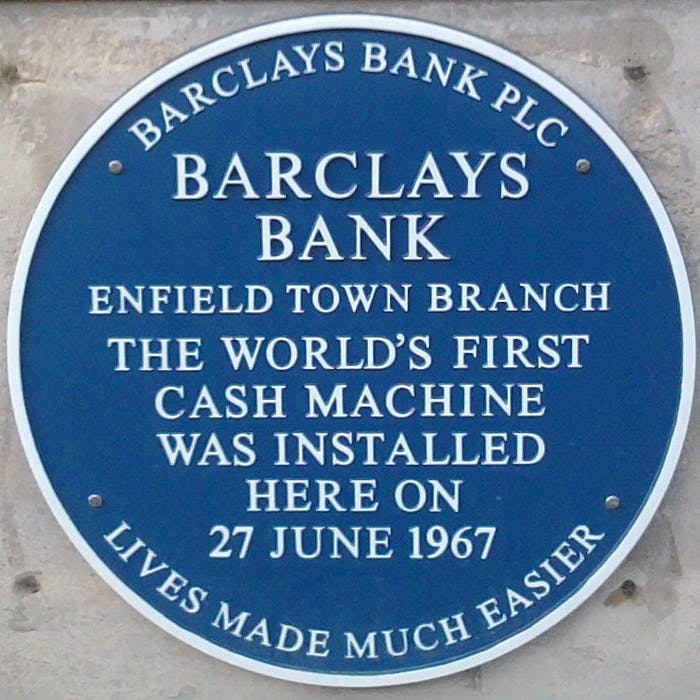
The First ATM
It is widely accepted that the world's first ATM was installed at a Barclays Bank in Enfield Town, London in 1967. This was the product of John Shepherd-Barron and his team of engineers.
The story goes that John Shepherd-Barron conceived the idea for a self-service machine dispensing cash whilst lying in the bath. He was considering the problem of bank opening hours, having turned up at a bank after closing time one day and found himself unable to withdraw money.
Shepherd-Barron has stated that he was inspired by chocolate vending machines: "It struck me there must be a way I could get my own money, anywhere in the world or the UK. I hit upon the idea of a chocolate bar dispenser, but replacing chocolate with cash.”
He pitched the idea to the head of Barclays Bank over a pink gin. Initially, a PIN length of six digits was proposed; Shepherd-Barron tested this system on his wife, Caroline, but found that the longest string of numbers that she could remember was four. As a result, four-digit PINs were chosen and as ATMs expanded across the globe, this became the world standard.
However, there is more to this story ....
Another Scot, James Goodfellow, was the first to patent automated cash machines that use pin numbers. He lodged his patent in May 1966, more than a year before that first cash machine in Enfield was ceremonially opened in a blaze of publicity. Though Goodfellow's machines were installed a month later than Shepherd-Barron's, it is Goodfellow's design, using a plastic card, that has become the norm.
Further reading
Links to external websites are not maintained by Bite Sized Britain. They are provided to give users access to additional information. Bite Sized Britain is not responsible for the content of these external websites.
